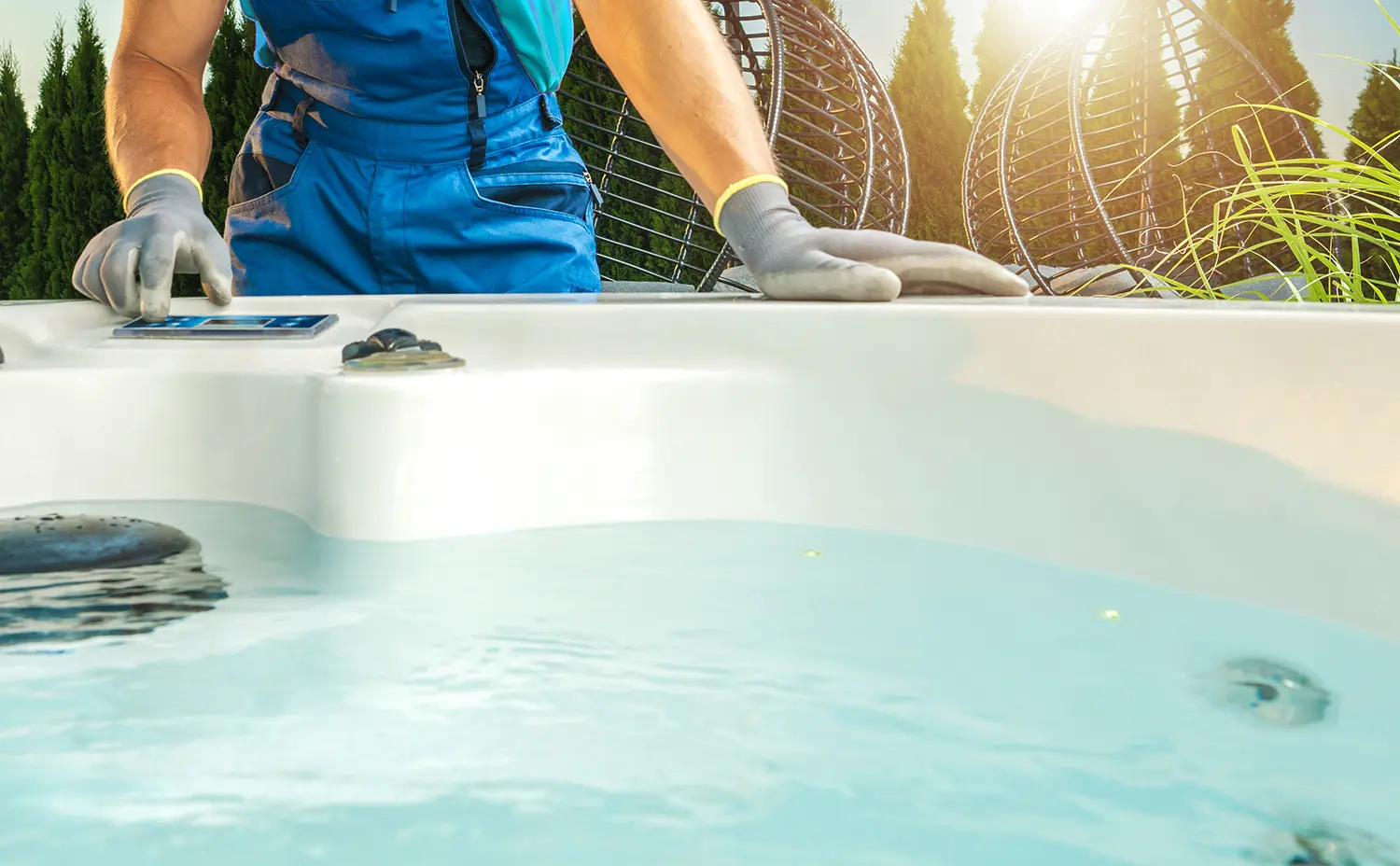Dreaming of unwinding in your own backyard hot tub after a long day? Before you jump in, it’s crucial to understand the electrical groundwork that ensures your soak is both safe and enjoyable.
Wiring your hot tub is not just about combining water and power—it’s about creating harmony between the two, a task best left to the experts.
At Blue Lagoon Pools in Sinking Spring, PA, we want to ensure you’re well-informed about the electrical specifications required for your retreat. Learn more about wiring a hot tub.
The Power Behind the Relaxation
Most backyard spas necessitate a 50-amp service and a 240-volt connection. This might sound a bit technical, but don’t worry—it essentially means your hot tub will have enough juice to keep the water warm and the jets bubbly without overloading your home’s electrical system.
Safeguarding Your Investment
Proper installation is non-negotiable for protecting your hot tub and ensuring years of trouble-free use. Incorrect wiring can lead to issues from a constantly tripping breaker to more severe safety hazards. That’s why partnering with a licensed electrician, familiar with both local codes and National Electric Code guidelines, is crucial. They ensure your spa is connected safely and efficiently, letting you lounge without a worry.
Plug and Play vs. Traditional: Know Your Type
Hot tubs come in two types: plug-and-play and traditional, each with unique electrical demands.
- Plug-and-Play Hot Tubs: These are the ultimate in convenience. As the name suggests, you can plug them into a dedicated circuit and start relaxing. Just ensure they’re the only device on that circuit to prevent overloads.
- Traditional Hot Tubs: For those envisioning a more permanent relaxation spot, traditional hot tubs require a dedicated GFCI breaker and a 240-volt/50-amp connection. This setup is directly wired to your home’s system, delivering a steady and efficient power supply for those long soak sessions.
Costs and Considerations When Wiring a Hot Tub
The distance from your main panel to the hot tub can influence the cost of installation, as can local electrician rates and the price of materials like copper. Planning your hot tub’s location with these factors in mind can help manage costs and ensure a smooth installation process.
Code Compliance and Safety
Adhering to the National Electrical Code, outdoor spas like ours must utilize GFCI-protected circuits for ground fault protection. This requirement enhances safety by instantly cutting off power in the event of a fault, preventing potential electric shock.
Common Queries Untangled
- Finding Your Hot Tub’s Electrical Requirements: Information specific to your spa can be found directly through us or your electrician, ensuring you meet all necessary specifications.
- The Importance of a Licensed Electrician: To guarantee your hot tub’s safe operation, a professional understands the intricacies of electrical systems and adheres to all regulations, providing peace of mind alongside your relaxation.
- Generator Use: Yes, in case of extended power outages, your hot tub can run on a generator, provided it meets the amperage requirements. However, thanks to modern insulation, short outages shouldn’t pose a significant concern.
Dive Into Serenity with Confidence
Embarking on the journey to install a hot tub should be as relaxing as using one. By understanding the electrical groundwork and enlisting the right professionals, you’re setting the stage for countless serene evenings.
At Blue Lagoon Pools, we’re here to ensure your hot tub not only enhances your backyard’s aesthetics but does so safely and efficiently.


